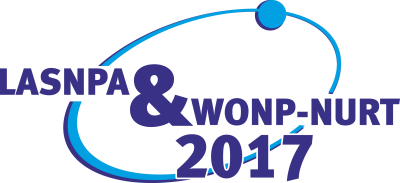Speaker
Description
One of the nuclear techniques that are being investigated by different groups in the field of explosives detection and demining is the thermal Neutron Backscattering Technique (NBT). NBT is based on the fact that the buried target is Hydrogen-rich and therefore if it is in a media with different Hydrogen content and it is exposed to a fast neutron source, the number of backscattered thermal neutrons produced by the moderation process will give us a signal from which we can infer the presence of the Hydrogen-rich target. NBT is used to locate buried Hydrogen-rich objects using a fast neutron source and two $^3$He neutron detectors. Special problems need to be understood as well as is necessary to study the advantages, disadvantages and limits of the technique in the Colombian case. One of the most important issues that have to be investigated is the soil moisture. The backscattered neutrons intensity was related with the soil water content for farming soil, with and without Hydorgen-rich objects in soil. The experimental results are presented with the purpose of comparing the soil water content as measured by NBT and the gravimetric method. NBT intensity signal changes for both object and soil water content, and the best performance in the data analysis.
